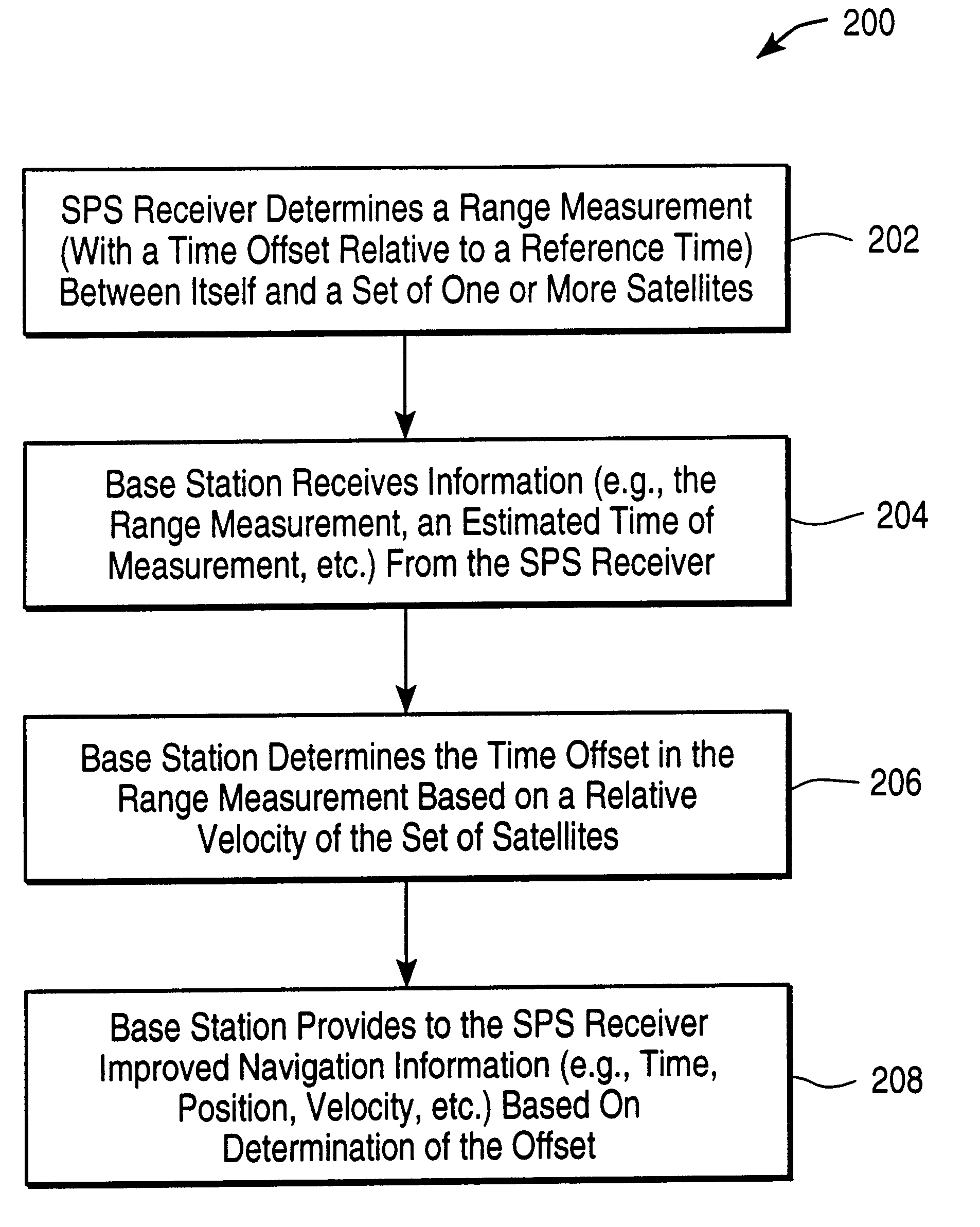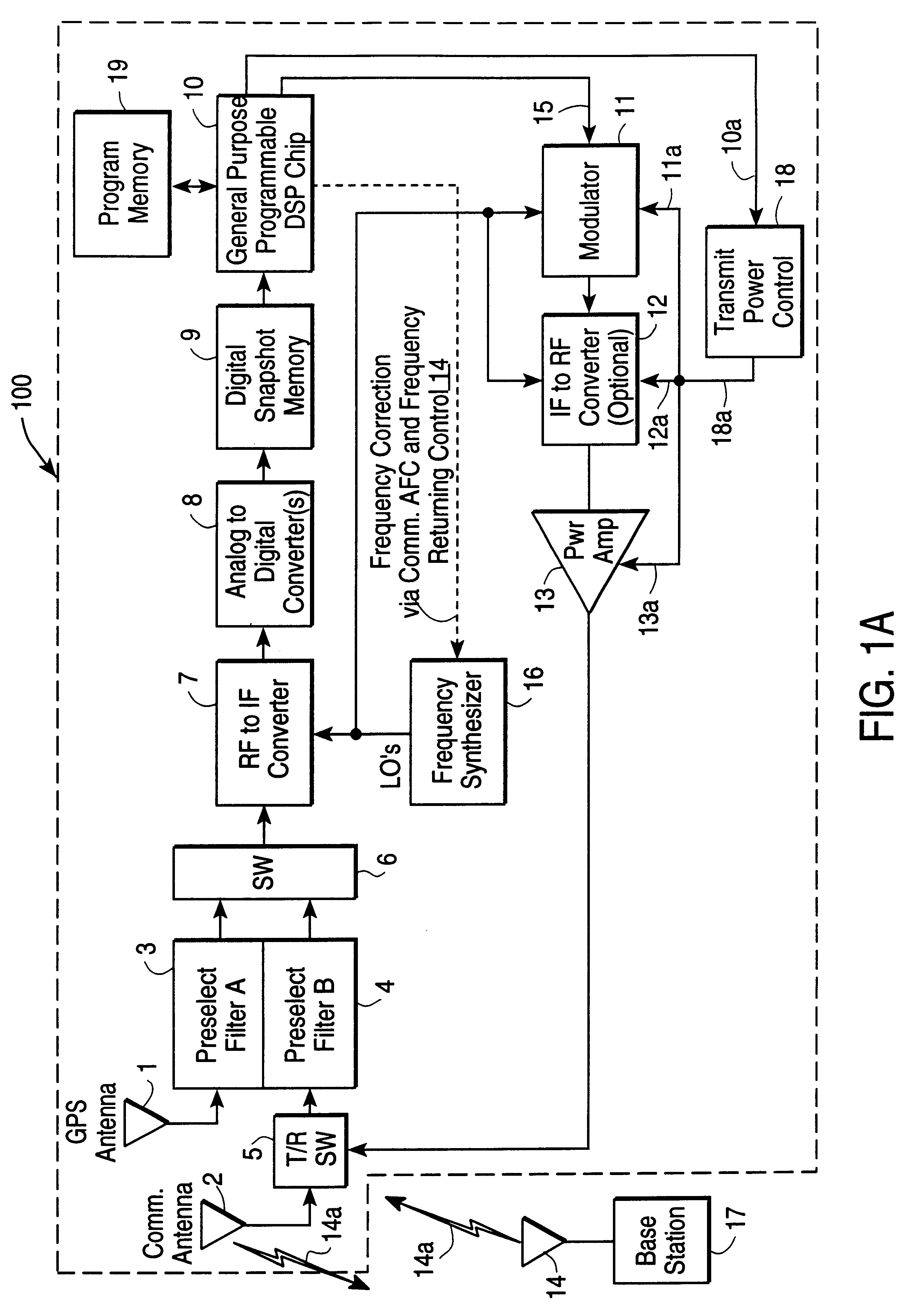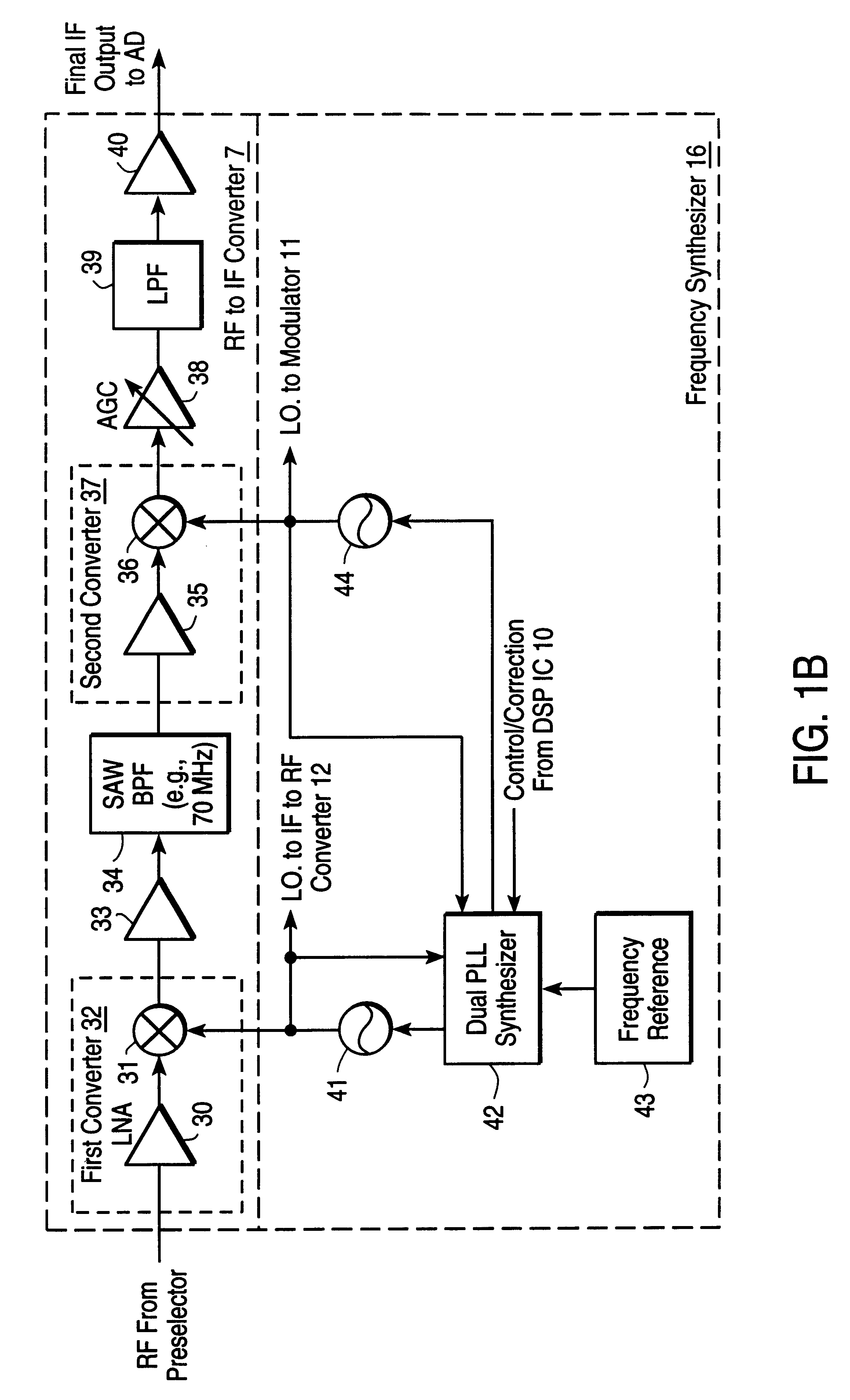Method and apparatus for determining time in a satellite positioning system
- Summary
- Abstract
- Description
- Claims
- Application Information
AI Technical Summary
Problems solved by technology
Method used
Image
Examples
Embodiment Construction
UTILIZING SATELLITE VELOCITY FOR TIME DETERMINATION
FIG. 2 is a flow diagram illustrating a method for utilizing relative satellite velocity for time determination in a satellite positioning system, according to one embodiment of the invention, as may be utilized with a mobile SPS receiver which is combined with a mobile communication receiver and transmitter, such as that shown in FIG. 1A. In the method 200 shown in FIG. 2, an entity, such as a mobile SPS receiver 100 shown in FIG. 1A, estimates its position to a set of one or more satellites in step 202. In one embodiment, the SPS receiver may determine a set of pseudoranges to the set of satellite based on signals transmitted from the satellites. As such, any range or position estimate by the SPS receiver will typically be offset relative to an actual position or range, due to an offset between the time of measurement as provided by the clock of the SPS receiver, and a reference time.
In step 204, a basestation, such as the basesta...
PUM
 Login to View More
Login to View More Abstract
Description
Claims
Application Information
 Login to View More
Login to View More - R&D
- Intellectual Property
- Life Sciences
- Materials
- Tech Scout
- Unparalleled Data Quality
- Higher Quality Content
- 60% Fewer Hallucinations
Browse by: Latest US Patents, China's latest patents, Technical Efficacy Thesaurus, Application Domain, Technology Topic, Popular Technical Reports.
© 2025 PatSnap. All rights reserved.Legal|Privacy policy|Modern Slavery Act Transparency Statement|Sitemap|About US| Contact US: help@patsnap.com



